Selfloss review

- 0 Comments
A stunning aesthetic and rich folkloric world lose points due to a series of small dispiriting missteps that weaken the whole
Selfloss, the third-person fantasy adventure by Goodwin Games, doesn’t have anything to do with currency, but as I played it got me thinking about what’s known as coin clipping. This was a practice, back when money was still minted from precious metals, where a person might surreptitiously shave a bit off the edge of a coin and save the parings for themselves. The result might look intact to the casual observer, but it was that much less valuable by weight. One clipped coin here or there wouldn’t cause much of a problem, but enough people doing it on a regular basis could significantly devalue the currency; while each shaving might be small on its own, all that missing gold adds up.
So it is with Selfloss, an ambitious game whose many dazzling components are diminished by an excess of small absences. It bills itself as a visually stunning journey through a fantastical archipelago painted in shades of Slavic and Icelandic myth, with plenty to explore, discover, and puzzle over, and on a macro level that’s what it delivers. The longer you spend with it, however, the more you’ll start to miss the little touches that help to elevate a functional game into a good one.
Selfloss tells the story of the elderly healer Kazimir, who, after a series of personal losses, has fallen into despair and disillusionment. Contacted in the depths of his grief by a spirit, he is told to journey over land and sea toward the distant spawning ground of the sacred Orca; there, his new patron says, he may find a way to mend his shattered soul. Along the way he’ll meet others like himself who have lost loved ones, and it’s Kazimir’s task to perform the ancient rite of selfloss on their behalf—a ceremony by which the dead move on and those who mourn them begin to heal. To this end, the spirit entrusts him with a magic staff through which he will channel and control the light of healing.
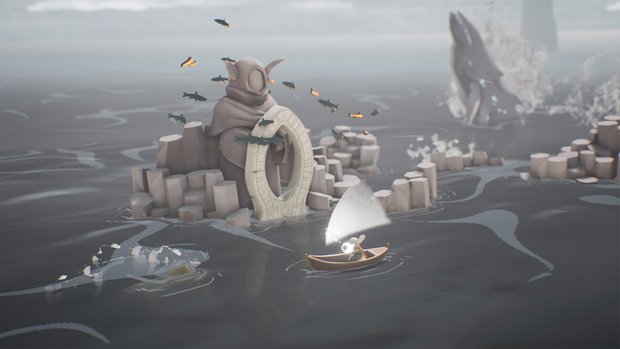
Kazimir’s world, called Jord, is in dire need of that light: it’s been overrun by the Miasma, a dark and corrupting force that spreads like a cancer and feeds on life itself. No one knows for sure where it came from, but rumors abound of the wicked sorcerer Koschei and the unspeakable acts he committed during the long-ago war that left the land and its peoples scarred and broken. Kazimir will have to navigate the echoes of that ancient conflict as he travels, using the power of his staff to beat back the Miasma and heal both the land and its denizens.
The setting of Jord and the visuals that bring it to life are Selfloss’s greatest assets. Opportunities to learn new details of its complex history—to simply see more across the ten-plus hours you’ll spend there—provide the strongest incentive to keep playing. Shining the light of Kazimir’s staff on certain monuments and glyphs reveals legends from the cultures that carved them. Beautifully illustrated scrolls hidden in out-of-the-way crannies contain details about Jord’s people and creatures. While none of these are strictly necessary to finish the game, they lend additional life and character to the already vibrant landscapes.
These written narratives fit well into the world, as the dialogue is all unvoiced; each new scroll or legend you find comes to feel a bit like the wisdom of an unseen narrator. There are pitfalls to this approach, unfortunately: typos are frequent, as well as inconsistent spellings. “Jord” is sometimes spelled “Yord,” and the game has trouble deciding whether to call one of its vanished races the “Elfur,” the “Elfurians,” or the “Elves.” The text never becomes unintelligible, but the frequent errors do detract somewhat from immersion into the game’s world.
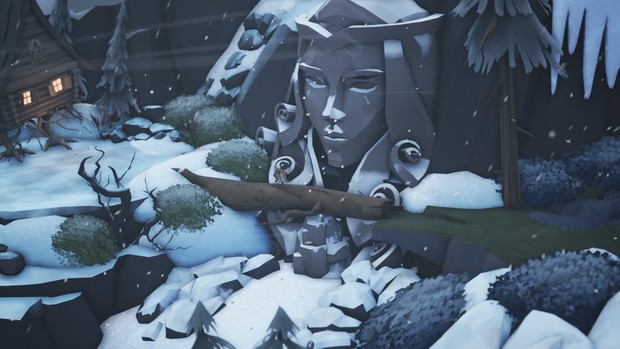
And what a world it is! Jord, despite its war wounds, is a lush and beautiful place, though its glories have faded down through the ages. The once-dominant cultures of the enigmatic Elfur and their foes, the Giants, have long since collapsed as a result of their old conflict, but the wilds have moved in to reclaim what they left behind, and life appears to be on the upswing. Though many locales have a drab, faded character to their palettes, flowering plants have begun to climb the ancient ruins, while colorful marine life and other exotic creatures make their homes nearby. There’s even a dark sort of beauty to the bruise-shaded purples and yellows of the Miasma’s tumorous extrusions. Hanging over it all is a soundtrack whose thrumming synths and mournful choral sections mimic both whale song and funereal keening, and whose whispering percussives often meld with the sound of waves.
Some of the beasts you encounter are frightening, like the fleshy, shambling monstrosities the Miasma leaves in its wake. Others are downright grisly, like the disembodied eyeball-spider who watches from on high in a sorcerer’s tower. But there’s also a playfulness to the game’s menagerie, a sense that you might turn a corner and run into just about anything: a flying, feathered sea-turtle, for instance, or a massive toad bedecked in lipstick and a golden crown. Sea life is everywhere, both in the water and gliding through the air: many-colored shoals of schooling fish; ethereal, floating medusae; and the whales, most regal of all, who are revered throughout Jord as divine beings. Some of these creatures will hinder or outright attack you, but others will be happy to help if you can win their trust; still others might require Kazimir to perform the rite of selfloss on their behalf.
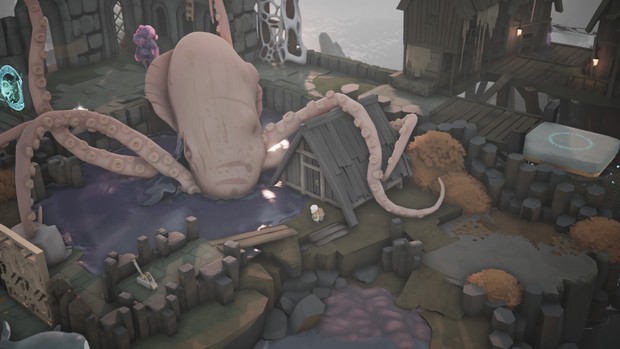
It’s there, in the actual doing, that the game’s shortcomings become more apparent. Considering the title and Kazimir’s role as healer, one might expect the selfloss ritual to form the crux of the game. Instead it’s oddly brief and insubstantial, consisting entirely of one fetch quest to find an item connected intimately to the departed and another for a special fish that allows it to proceed. Simply find these two items and take them back to the creature who needs the rite, and with a few waves of Kazimir’s staff the whole thing’s over and done with. Considering the emotional weight that both the participants and the narrative give it—not to mention its very purpose as a source of catharsis—completion of the ritual should be a heavy, spiritually moving moment, but it feels like having to run a few errands in order to tick a quick box. We never get a sense of why this ritual is needed, or how it actually helps; we’re simply told that it is and it does.
Most of the game’s other puzzles are centered in some way on Kazimir’s staff. Its light not only dispels the Miasma and harms its creatures, it also attracts schools of fish and activates certain glyphs and triggers left by the vanished Elfur. Later, after gaining the ability to focus the staff’s energy into concentrated blasts, you’ll use it to shatter crystalline structures and so open up new pathways.
Like the selfloss ritual, these puzzles are functional—find and activate three symbols in a particular order, melt several Miasma growths to destroy a barrier, guide a school of flying fish from point A to point B to activate a mechanism—but they’re rarely memorable or engaging, feeling like rote mechanical obstacles without a unique link to this world, these characters, or their story. Combat is likewise basic and repetitive: weaker Miasma-beasts explode if you focus your light-beam on them, while the hardier ones require a few blasts and a couple hard smacks to subdue.
At certain points you’ll find yourself faced with the equivalent of a boss battle. A few of these work like straightforward combat sequences—aim your beam to do damage—but most boil down to potentially lethal variations on puzzles you’ll encounter elsewhere: destroy the Miasma-growths driving a beast mad, for instance, or blast apart the crystals from which it draws its power. Some require dexterity and precise timing, like an extended and absolutely maddening chase sequence where you flee a giant spider-monster and have to restart the whole encounter if you’re caught.
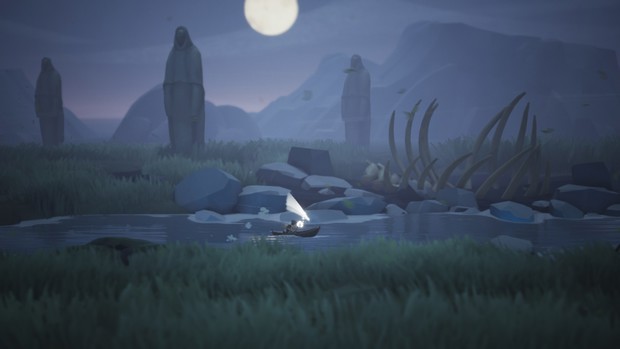
Death is very much a factor in Selfloss, with separate meters for physical damage and Miasma accumulation; too much of either and you’ll restart from the most recent checkpoint or manual save. You collect healing herbs scattered throughout the environment to recover from physical attacks, while the staff’s healing light removes any Miasma clinging to Kazimir. (More on that in a moment.)
The controls are optimized for a gamepad; it’s possible to play with mouse and keyboard, but it’s neither easy nor pleasant. You move Kazimir with one control stick (or WASD, if you hate yourself), with a button that nominally toggles between walking and running; the difference in speed is so insignificant, though, that it’s barely worth using. The other control stick (or the mouse, again, if—you get the picture) lets you aim the staff, with dedicated buttons for the beam’s various functions.
Interestingly, Kazimir doesn’t have to be holding the staff to control it. A button press lets you alternately set it down or summon it magically back to Kazimir’s hand, setting up a handful of more creative puzzles where Kazimir and the staff function almost like separate characters. Say a door only opens if your light is shining on a certain glyph: you can set your staff down and, while still controlling the beam, have Kazimir run through before calling the staff back. (This is also how you heal Miasma damage.)
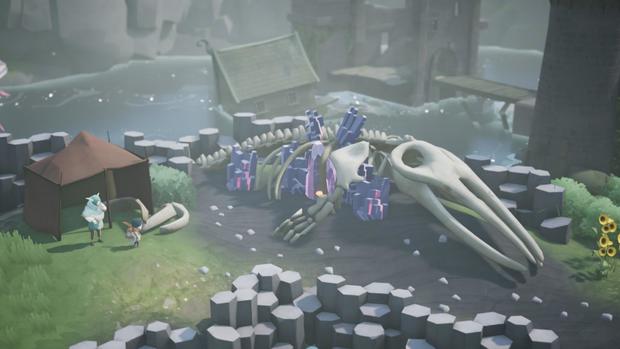
Selfloss’s nautical trappings mean you’ll spend a lot of time traveling in Kazimir’s little boat. The controls are basically the same in water as on land, with a few key differences, like the ability to charge the boat up and send it hurtling forward like a battering ram. Certain situations, like the selfloss ritual itself, require you to catch a particular fish. You do so by first training your staff’s light on it and then, once it’s connected like a fishing line, letting your quarry drag your boat around while you wait for the signal to press a button and start reeling it in. Here, too, the gameplay feels strangely disconnected from the situation at hand: the fish can’t break free unless you mistime your button press, so there’s hardly any tension or excitement in trying to keep it hooked. You don’t even need to do much steering while it’s happening, as the fish pulls you along in its wake. Your agency is limited to pressing a button at the right moment and repeating until the fish is yours, maybe adjusting yourself slightly if you come too close to a rock.
The latter might be easier said than done, though, as Selfloss’s camera has an infuriating tendency to get stuck in such a way that you can’t see what you’re doing. Most of the time this is inconvenient but manageable, but on a few occasions it made it impossible for me to actually see the puzzle I was trying to solve. I had to feel my way back out of the area and then return, hoping the camera would reset itself. More than once it proved fatal, as I was summarily murdered by enemies I couldn’t see. It wasn’t the most infuriating bug—that would be the one that sent me falling through the game world without a way to get back, forcing me to reload from a checkpoint—but it was certainly the most persistent.
Still and all, the atmosphere was strong enough that I spent long stretches thinking Selfloss might win me over in spite of itself. It was only when the last act suddenly ended and the credits began to roll that it squandered its last lethal amount of goodwill. In its final few minutes the game pulls a nasty and decidedly un-foreshadowed bait-and-switch that not only undermines everything you’ve done to that point—which could be forgivable if done well—but reveals the game’s entire tone and manner of presentation to have been a cheap scrim held up to conceal crucial knowledge from the player.
Misdirection is a perfectly valid storytelling tactic, but its power lies in artfully twisting the truth so that the listener neglects to notice what’s right in front of them until it’s too late. What Selfloss does with its last-minute twist feels, in so many words, like a simple and rather artless lie. A person can be dishonest, so it’s no cheat when a character conceals information without telling the audience; it’s something else entirely for the work itself to use imagery, musical cues, and cinematographic flourishes to imply a certain status quo, only to pull the rug out later and reveal the whole presentation as a tearaway disguise.
Final Verdict
Each one of these issues on its own might not have been that big of a problem; it’s when you take them all together and measure them against what’s left that you see how much Selfloss is missing. Aesthetically it’s a delight, and its world practically begs to be explored, but its bland, repetitive puzzles, badly implemented camera and deeply unsatisfying conclusion render that journey much less fulfilling than it might have been. With more time and thought—and a much more honest ending—it’s not impossible to imagine that Selfloss could have been a genuinely impressive piece of work; instead, it’s merely passable.
Hot take
Sailing through the Slavic- and Icelandic-influenced world of Selfloss is often a breathtaking sensory experience, but unengaging puzzles, buggy features and an ill-conceived final twist mean its pleasures are largely limited.
Pros
- Visually gorgeous fantasy world full of strange and marvelous creatures
- Soundtrack enhances the mood of melancholy maritime longing
- Some interesting gameplay mechanics
Cons
- Puzzles are repetitive and basic, without substantial connection to the world or narrative
- Camera is implemented poorly, sometimes making it hard or impossible to tell what you’re doing
- Some game-breaking bugs
- Finale feels cheap and unearned, undercutting the substance of all that came before
Will played his own copy of Selfloss on PC.


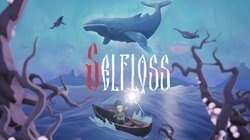







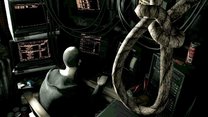
0 Comments
Want to join the discussion? Leave a comment as guest, sign in or register in our forums.
Leave a comment